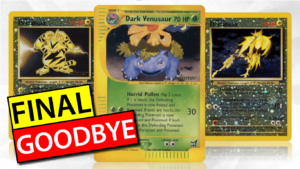How to Clean Yu-Gi-Oh! Cards
-
By: Oliver Copeland
- Published:
- Last Updated: February 4, 2024
There’s nothing worse than recovering your old Yu-Gi-Oh cards to discover that some or many are dirty. You may want to use the cards for play or display them, but you’ll probably want to clean them up first. It can be done. The trick is to be patient and follow this guide carefully.
Most collectors would argue that cards should probably not be cleaned by anyone other than a professional. If you decide to clean any of your cards yourself, please use caution and practice first on some cheap cards.
Reasons to clean your cards
If you’ve just pulled a chase card fresh from a booster pack, there is no reason to clean it. Sleeve that sucker right away! But if you’re recovering cards from your childhood collection, well, chances are that they need quick cleaning. Small specs of dirt seem to accumulate on cards that received a lot of attention on the school playground. Now, it’s time to put these cars on display.
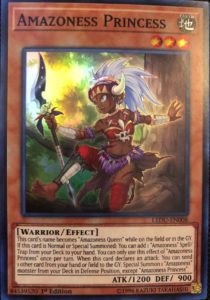
One common reason to clean a card is to send it off for grading. These services do not clean your cards for you. If you send in a card with a speck of dirt on it, it will remain there sealed in the slab, and with a harsh grade to boot.
Perhaps you just want to clean up your cards. That’s fine too, but there is always a risk when cleaning cards, as scratches can occur on the holofoil or excess moisture being absorbed into the card.
How to safely clean cards
To clean cards, we’ll be using a very small amount of water. Any harsh chemicals have a chance of running or bleeding the ink on the card.
Step 1: Padding
Select the card you want to clean and place it on a soft surface that will not scratch the card. I like to use a brand new microfiber cloth as padding. Placing your card on a rough or dirty surface such as a countertop or desktop may result in light scratches or damage to the back of your Yu-Gi-Oh card.
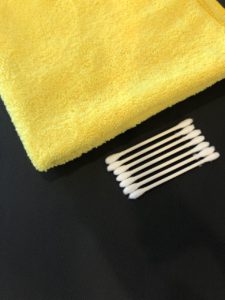
Step 2: Gather cleaning tools
Find some cotton swabs or a brand-new microfiber cloth. It is critical that these materials are non-abrasive and void of any dust, dirt, or debris. You’ll also want a small cup or ramekin to hold your cleaning solution.
The cleaning solution should be mostly water. In fact, I would recommend using only water. However, if water isn’t doing the trick or if it needs a little extra kick, then add a drop of dish soap or a very small amount of Windex or glass cleaner.
Step 3: Start cleaning
Apply a very small amount of cleaning solution to your cotton swab or microfiber, and very gently sweep the dirty section of the card. Be sure to switch to another swab or a new section of the microfiber often, to avoid rubbing any of the debris against the card.
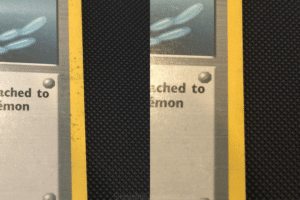
Patience is the key here. Some small dirt specs may appear to be stuck at first, but with some persistence, they will eventually moisten and wear off. Some tougher spots may require a light circular motion with your cleaning tool, but this can cause scratches on a foil surface, so proceed with caution. Apply very little pressure.
Note: If your card is dry, it may absorb moisture from the water used to clean it. When this happens, holofoil cards may warp slightly. This can be avoided by applying less water or cleaning slowly, blowing on the card to evaporate the water quickly. However, the warping may be reversed.
What to do if the card warps
If you are curious about why cards warp and want to know more, click here.
Once your card has absorbed moisture, it may warp. To reverse this, the moisture has to be removed from the card through evaporation. The methods are outlined in the article linked above, but the most common method is to apply very little heat with a blow dryer. Once again, this can damage your card if done incorrectly, so please use caution.
If done correctly, the excess moisture will be evaporated from the card and the card will be almost flat again. After this, sleeve your card and place it into the pages of a large book for 48 hours or longer, to keep its shape. I have used this method multiple times, it works amazingly.
Can you fix whitening on cards?
Unfortunately, whitening can not be fixed. Any attempt to do so will likely cause further damage to the card. This is why proper storage, handling, and preventative measures are critical to the card’s longevity and value.
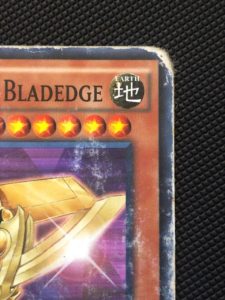
Conclusion
No collector likes dirty cards, but we all have one or two from childhood that saw heavy use on the playground. If only we knew what we were doing! Now it’s time to clean them up and possibly send some in for grading. Cleaning your cards can be a tedious and stressful process, so go carefully and with caution. It’s a good idea to dig up some bulk cards to practice on. Good luck and hopefully you took good care of that Blue Eyes!




